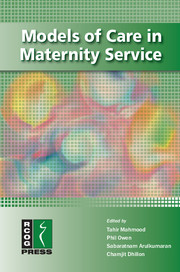
- Cited by 3
-
Cited byCrossref Citations
This Book has been cited by the following publications. This list is generated based on data provided by Crossref.
2012. Obstetric and Intrapartum Emergencies. p. 15.
Lim, Chu Chin and Mahmood, Tahir A. 2021. Obstetric and Intrapartum Emergencies. p. 17.
Naqi, Asma and Sule, Medha 2021. The EBCOG Postgraduate Textbook of Obstetrics & Gynaecology. p. 524.
- Publisher:
- Cambridge University Press
- Online publication date:
- July 2014
- Print publication year:
- 2010
- Online ISBN:
- 9781107478336




